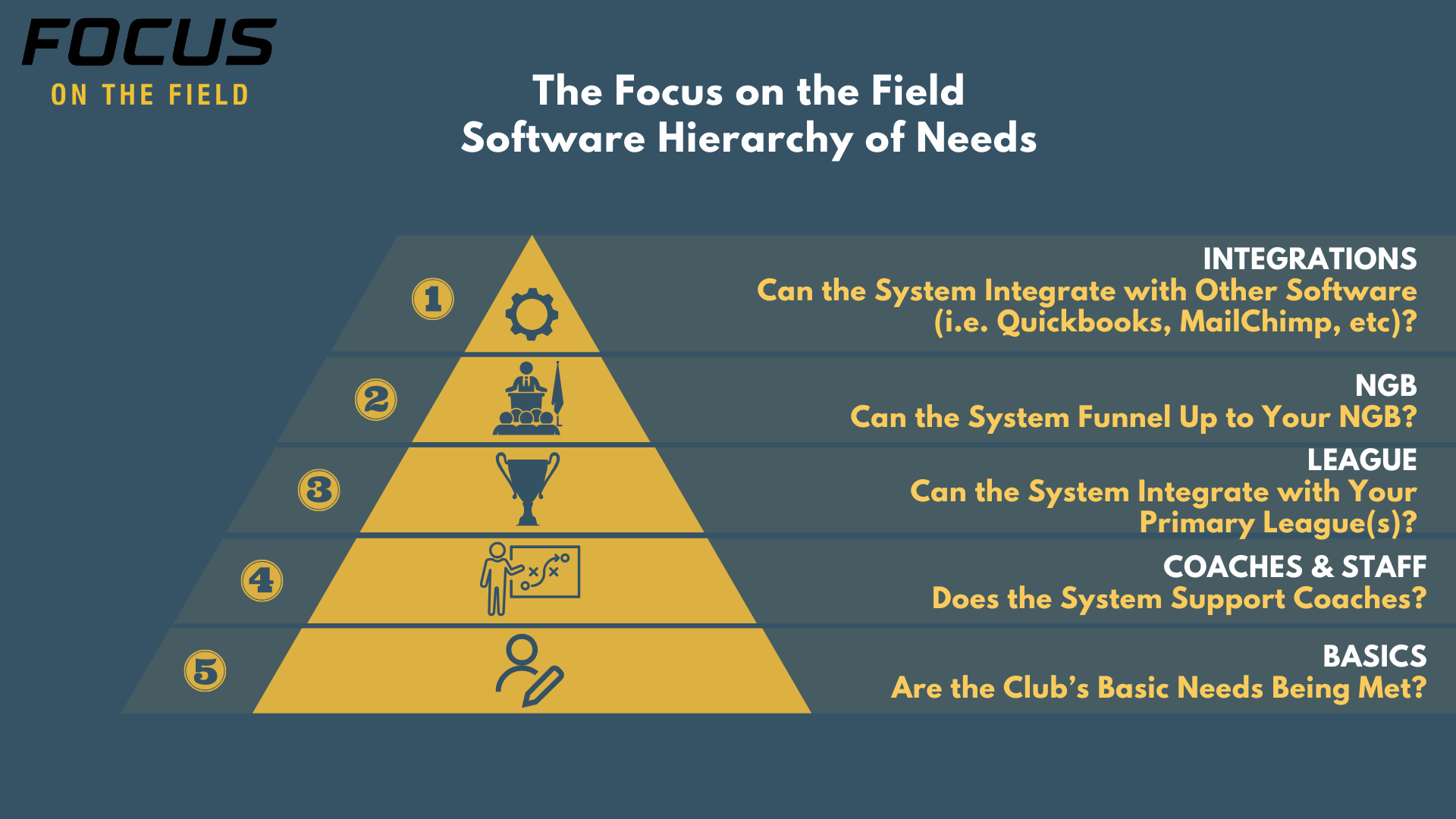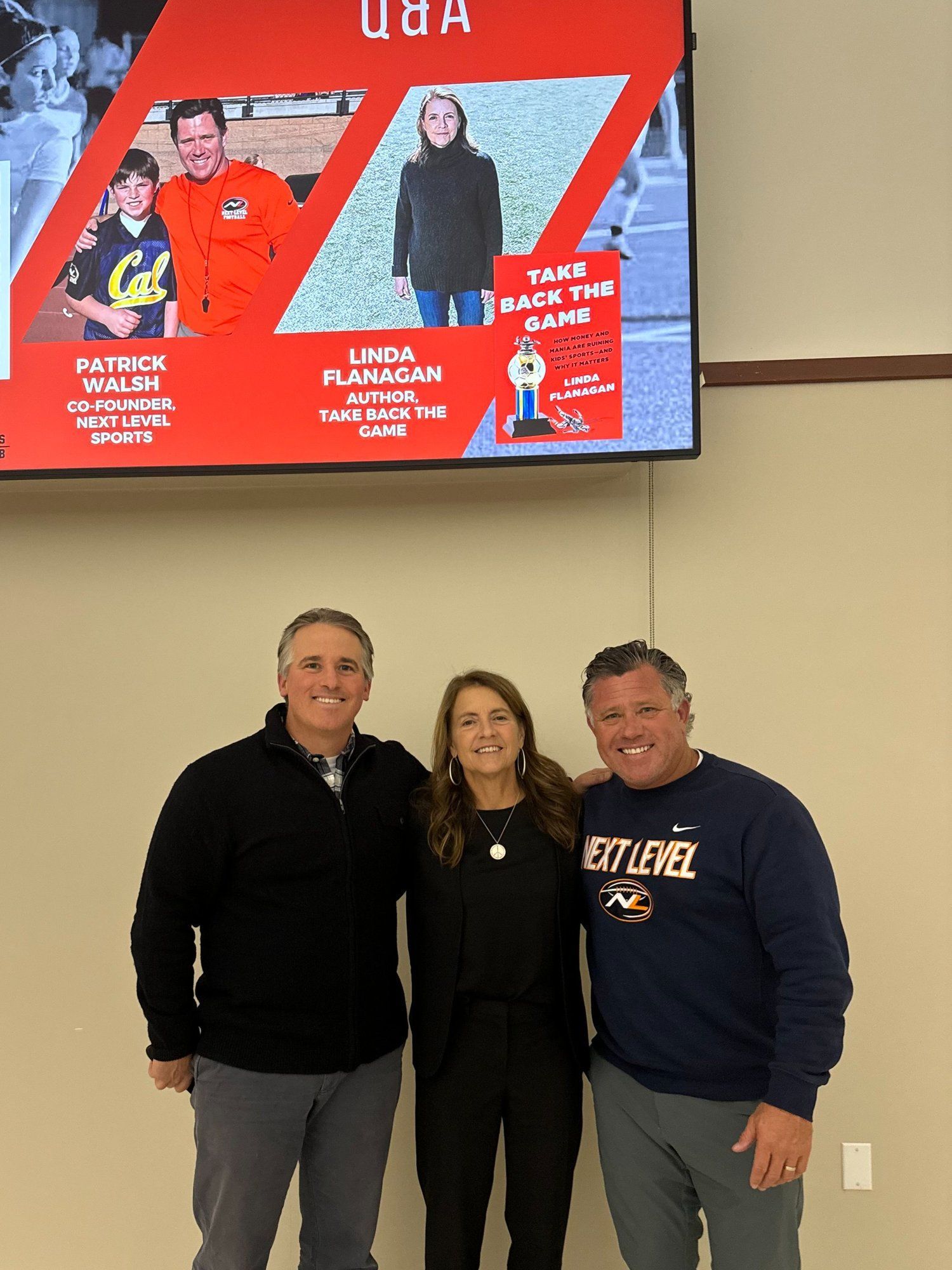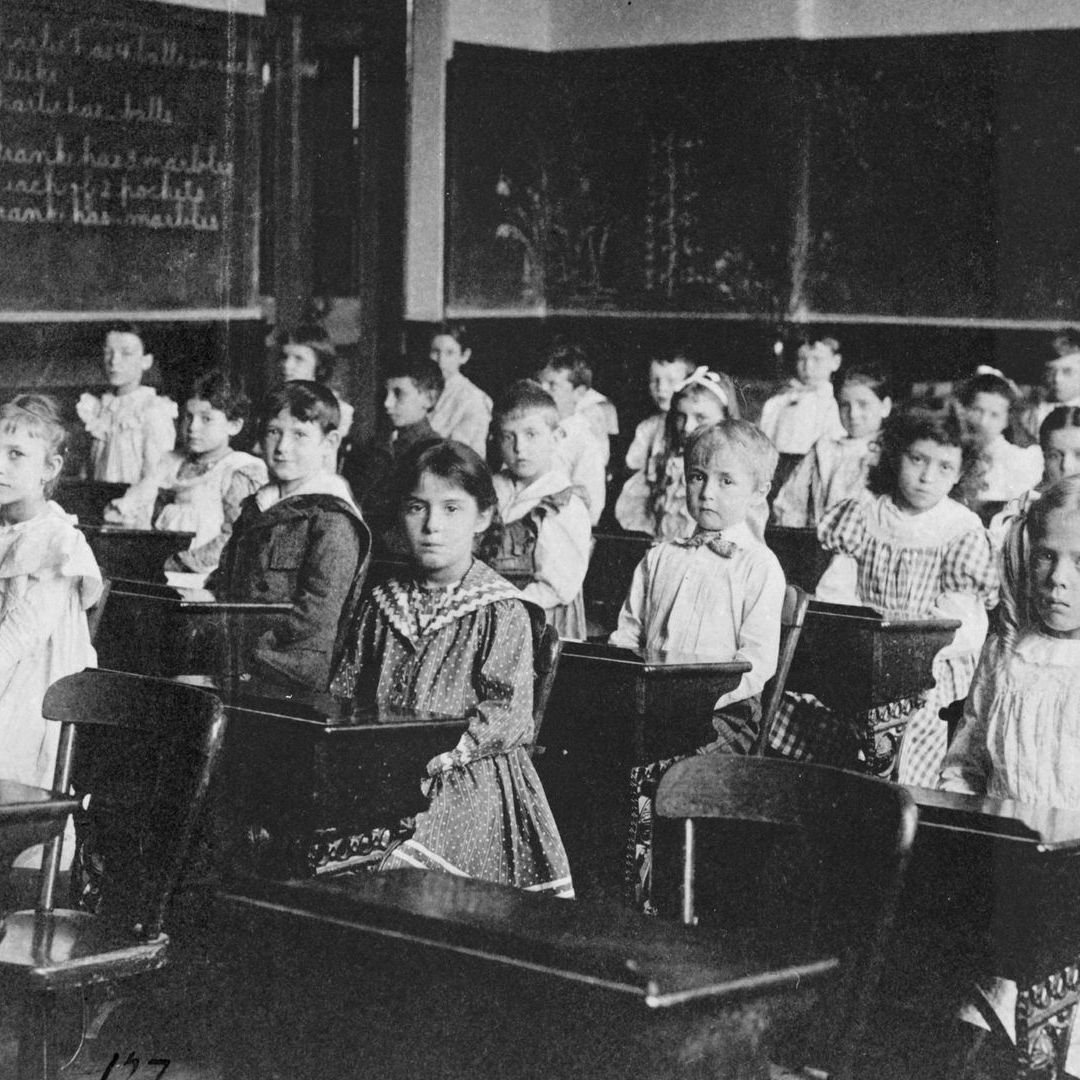Which Software System Should I Use?

The number one question I get about 5 times a week - which software system should I use? And my answer is always….it depends. I know it's frustrating, but there are MANY factors that should be considered when choosing a software system.
And when thinking about the best way to describe those factors and how to prioritize them, Maslow’s Hierarchy of Needs came to mind. I promise this won’t be a psychology lesson, but the principle of ranking your NEEDS in order is important in choosing a software vendor. Remember YOU NEED a software system in order to operate your youth or amateur sports organization. If you are still using PDFs, spreadsheets or some other non software registration method then this article is JUST WHAT YOU NEED - we gotta get you online!
Also, remember you should focus on the NEEDS not the WANTS of the club - WANTS may cause you to adopt a system that is clunky (or in some cases too shiny) and unresponsive to the needs of your entire organization.
BASICS:
At the most basic level, every software system that you choose should be able to:
-
Register players
-
Take payments
-
Roster players to a team
-
Run basic reports on programs and financials
-
Allow a schedule to be created
-
Allow you to communicate with your stakeholders (parents, coaches, staff)
-
An app - used to not be basic, but I consider it so now
You should also create a list of non-negotiables that you have for your club. For example, if you had trouble collecting all of your payments last year, then a system with strong financial reporting and communications is KEY.
These “basics” should be your foundation and you should not evaluate anything that doesn’t cover off at least 80% of these along with your non-negotiables list.
STAFF & COACHES: Does It Help Others in the Club?
Once your club’s basics are taken care of, then you need to look after your second most important group of stakeholders behind the players and parents - your staff and coaches. Your admin staff will have a set of needs that is different from your coaches - ask them what they need and try to find a solution that can help with that.
Most of the admin staff needs will be taken care of at the basics level, but for the coaches they have needs that will likely need to wait til this phase. It is commonplace now to have operating systems with native or integrated coaching tools for example, so see if a software you are evaluating can help fill that gap.
LEAGUES: Does It Help You Integrate Your League?
After your club and coaches/staff are handled, then it’s time to start looking outside the club and to your league. If you use the same operating system as your league what operational efficiencies could you gain? What would be the detriment to integrating (if any)? - this is the level to assess that.
NGBs: Can You Integrate With Your NGB?
If all the stars aligned, would it be possible for my operating system to integrate with my National Governing Body (NGB)? For some sports (i.e. Lacrosse) a USA Lacrosse integration would be on the non-negotiable list, but for soccer there are often a lot more factors involved (due to the fractured nature of soccer governance) that do not necessarily allow for an integration between your club and the NGB. This is the level to dig into all of that.
INTEGRATIONS: Can It Handle Complex Integrations?
And then finally if all the stars and then the moons aligned together, what else could you integrate. Could you get your club almost entirely out of manual work? Are there automations you could use? If you’ve gotten to this level you are at the pinnacle and likely have the luxury of digging into these capabilities.
What You Want to Aim For
In general you want to at least get to the Leagues Level - rung three. If your basic needs and your staff and coaches are being taken care of you are in a good spot. And if you play a sport that doesn’t have a league (think travel lacrosse, volleyball) then you can hop over a step and go straight to the NGB, which may be a larger and more important step for you than other sports.
You may also find that your levels may be in a different order - say that you have the basics, staff and coaches and integrations, but you forgo Leagues and NGBs - that’s ok too. Again it all depends.
The Tournament Caveat
Many clubs these days also run tournaments - that’s awesome! Great additional source of revenue. Good brand recognition. And most importantly - more opportunities for play. When evaluating a tournament software there are fewer options available on the market, and the biggest caveat here is that what works for your club’s NEEDS may not work for your tournament’s NEEDs. That’s because the software was built for different stakeholders and different timeframes of play. I do find scenarios where an organization uses one software for everything, but it’s RARE, RARE. And that’s again ok - I’d just suggest doing two separate evaluations.
Things to Consider
Once you’ve outlined your overall needs as a club and prioritized them, you’ll next want to ask yourself:
-
What is our budget for software? With and without a website from the vendor?
-
If we are going to have a separate website - is it easy to link with the platform?
-
What are the credit card fees involved? And can those be passed along to the customer?
-
Are credit card fees refundable?
-
How hard will it be to onboard?
-
Who will lead the onboarding?
-
How will we communicate the change to membership?
The Focus on the Field Take
We are entirely software agnostic by design - we are trained in and support over a dozen platforms because IT DEPENDS. What works for one org may not work for another, so we feel it’s best to support our client with THEIR CHOSEN software, not what we choose.
If we are asked we of course provide advice, make introductions and even sit in on demos, but ultimately it is the client who decides. Once decided we help with a full platform transition (backend and front end).
Feeling overwhelmed by it all?
As the old saying goes - how do you eat an elephant? Bit by bit. Or you can just give Focus on the Field a jingle - we’ve got ya.











